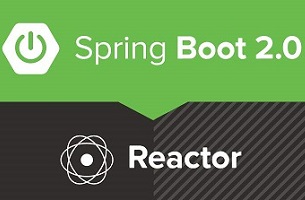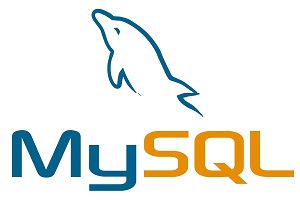Kubernetes 新玩法:在 yaml 中编程
作者 | 悟鹏
引子
性能测试在日常的开发工作中是常规需求,用来摸底服务的性能。
那么如何做性能测试?要么是通过编码的方式完成,写一堆脚本,用完即弃;要么是基于平台,在平台定义的流程中进行。对于后者,通常由于目标场景的复杂性,如部署特定的 workload、观测特定的性能项、网络访问问题等,往往导致性能测试平台要以高成本才能满足不断变化的开发场景的需求。
在云原生的背景下,是否可以更好解决这种问题?
先看两个 yaml 文件:
-
performance-test.yaml 描述了在 K8s 中的操作流程:
- 创建测试用的 Namespace
- 启动针对 Deployment 创建效率和创建成功率的监控
- 下述动作重复 N 次:① 使用 workload 模板创建 Deployment;② 等待 Deployment 变为 Ready
- 删除测试用的 Namespace
- basic-1-pod-deployment.yaml 描述使用的 workload 模板
performance-test.yaml :
apiVersion: aliyun.com/v1alpha1 kind: Beidou metadata: name: performance namespace: beidou spec: steps: - name: "Create Namespace If Not Exits" operations: - name: "create namespace" type: Task op: CreateNamespace args: - name: NS value: beidou - name: "Monitor Deployment Creation Efficiency" operations: - name: "Begin To Monitor Deployment Creation Efficiency" type: Task op: DeploymentCreationEfficiency args: - name: NS value: beidou - name: "Repeat 1 Times" type: Task op: RepeatNTimes args: - name: TIMES value: "1" - name: ACTION reference: id: deployment-operation - name: "Delete namespace" operations: - name: "delete namespace" type: Task op: DeleteNamespace args: - name: NS value: beidou - name: FORCE value: "false" references: - id: deployment-operation steps: - name: "Prepare Deployment" operations: - name: "Prepare Deployment" type: Task op: PrepareBatchDeployments args: - name: NS value: beidou - name: NODE_TYPE value: ebm - name: BATCH_NUM value: "1" - name: TEMPLATE value: "./templates/basic-1-pod-deployment.yaml" - name: DEPLOYMENT_REPLICAS value: "1" - name: DEPLOYMENT_PREFIX value: "ebm" - name: "Wait For Deployments To Be Ready" type: Task op: WaitForBatchDeploymentsReady args: - name: NS value: beidou - name: TIMEOUT value: "3m" - name: CHECK_INTERVAL value: "2s"basic-1-pod-deployment.yaml:
apiVersion: apps/v1 kind: Deployment metadata: labels: app: basic-1-pod spec: selector: matchLabels: app: basic-1-pod template: metadata: labels: app: basic-1-pod spec: containers: - name: nginx image: registry-vpc.cn-hangzhou.aliyuncs.com/xxx/nginx:1.17.9 imagePullPolicy: Always resources: limits: cpu: 2 memory: 4Gi然后通过一个命令行工具执行 performance-test.yaml:
$ beidou server -c ~/.kube/config services/performance-test.yaml执行效果如下 (每个 Deployment 创建耗时,所有 Deployment 创建耗时的 TP95 值,每个 Deployment 是否创建成功):
这些 metrics 是按照 Prometheus 标准输出,可以被 Prometheus server 收集走,再结合 Grafana 可以可视化展示性能测试数据。
通过在 yaml 中表达想法,编排对 K8s 资源的操作、监控,再也不用为性能测试的实现头疼了 :D
为什么要在 yaml 中编程?
性能测试、回归测试等对于服务质量保障有很大帮助,需要做,但常规的实现方法在初期需要投入较多的时间和精力,新增变更后维护成本比较高。
通常这个过程是以代码的方式实现原子操作,如创建 Deployment、检测 Pod 配置等,然后再组合原子操作来满足需求,如 创建 Deployment -> 等待 Deployment ready -> 检测 Pod 配置等。
有没有办法在实现的过程中既可以尽量低成本实现,又可以复用已有的经验?
可以将原子操作封装为原语,如 CreateDeployment、CheckPod,再通过 yaml 的结构表达流程,那么就可以通过 yaml 而非代码的方式描述想法,又可以复用他人已经写好的 yaml 文件来解决某类场景的需求。
即在 yaml 中编程,减少重复性代码工作,通过 声明式 的方式描述逻辑,并以 yaml 文件来满足场景级别的复用。
业界有很多种类型的 声明式操作 服务,如运维领域中的 Ansible、SaltStack,Kubernetes 中的Argo Workflow、clusterloader2。它们的思想整体比较类似,将高频使用的操作封装为原语,使用者通过原语来表述操作逻辑。
通过声明式的方法,将面向 K8s 的操作抽象成 yaml 中的关键词,在 yaml 中提供串行、并行等控制逻辑,那么就可以通过 yaml 文件完整描述想要进行的工作。
这种思想和 Argo Workflow 比较像,但粒度比 Argo 更细,关注在操作函数上:
下面简单描述该服务的设计和实现。
设计和实现
1. 服务形态
- 使用者在 yaml 中,通过 声明式 的方式描述操作逻辑;
- 以 all-in-one 的二进制工具或 Operator 的方式交付;
- 服务内置常见原语的实现,以关键字的方式在 yaml 中提供;
- 支持配置原生 K8s 资源。
2. 设计
该方案的核心在于配置管理的设计,将操作流程配置化,自上而下有如下概念:
- Service:Modules 或 Tasks 的编排;
- Module:一种任务场景,是操作单元的集合(其中包含 templates/ 目录,表征模板文件的集合,可用来配置 K8s 原生资源);
- Task:操作单元,使用 plugin 及参数执行操作;
- Plugin:操作指令,类似开发语言中的函数。
抽象目标场景中的通用操作,这些通用操作即为可在 yaml 中使用的原语,对应上述 Plugin:
-
K8s 相关
- CreateNamespace
- DeleteNamespace
- PrepareSecret
- PrepareConfigMap
- PrepareBatchDeployments
- WaitForBatchDeploymentsReady
- etc.
-
观测性相关
- DeploymentCreationEfficiency
- PodCreationEfficiency
- etc.
-
检测项相关
- CheckPodAnnotations
- CheckPodObjectInfo
- CheckPodInnerStates
- etc.
-
控制语句相关
- RepeatNTimes
- etc.
上述 4 个概念的关系如下:
示例可参见文章开头的 yaml 文件,对应形式二。
3. 核心实现
CRD 设计:
package v1alpha1 import ( corev1 "k8s.io/api/core/v1" metav1 "k8s.io/apimachinery/pkg/apis/meta/v1" ) // BeidouType is the type related to Beidou execution. type BeidouType string const ( // BeidouTask represents the Task execution type. BeidouTask BeidouType = "Task" ) // +genclient // +k8s:deepcopy-gen:interfaces=k8s.io/apimachinery/pkg/runtime.Object // Beidou represents a crd used to describe serices. type Beidou struct { metav1.TypeMeta `json:",inline"` metav1.ObjectMeta `json:"metadata,omitempty" protobuf:"bytes,1,opt,name=metadata"` Spec BeidouSpec `json:"spec,omitempty" protobuf:"bytes,2,opt,name=spec"` Status BeidouStatus `json:"status,omitempty" protobuf:"bytes,3,opt,name=status"` } // BeidouSpec is the spec of a Beidou. type BeidouSpec struct { Steps []BeidouStep `json:"steps" protobuf:"bytes,1,opt,name=steps"` References []BeidouReference `json:"references" protobuf:"bytes,2,opt,name=references"` } // BeidouStep is the spec of step. type BeidouStep struct { Name string `json:"name" protobuf:"bytes,1,opt,name=name"` Operations []BeidouOperation `json:"operations" protobuf:"bytes,2,opt,name=operations"` } // BeidouOperation is the spec of operation. type BeidouOperation struct { Name string `json:"name" protobuf:"bytes,1,opt,name=name"` Type BeidouType `json:"type" protobuf:"bytes,2,opt,name=type"` Op string `json:"op" protobuf:"bytes,3,opt,name=op"` Args []BeidouArg `json:"args" protobuf:"bytes,4,opt,name=args"` } // BeidouArg is the spec of arg. type BeidouArg struct { Name string `json:"name" protobuf:"bytes,1,opt,name=name"` Value string `json:"value,omitempty" protobuf:"bytes,2,opt,name=value"` Reference BeidouOperationReference `json:"reference,omitempty" protobuf:"bytes,3,opt,name=reference"` Tolerations []corev1.Toleration `json:"tolerations,omitempty" protobuf:"bytes,4,opt,name=tolerations"` Checking []string `json:"checking,omitempty" protobuf:"bytes,5,opt,name=checking"` } // BeidouOperationReference is the spec of operation reference. type BeidouOperationReference struct { ID string `json:"id" protobuf:"bytes,1,opt,name=id"` } // BeidouReference is the spec of reference. type BeidouReference struct { ID string `json:"id" protobuf:"bytes,1,opt,name=id"` Steps []BeidouStep `json:"steps" protobuf:"bytes,2,opt,name=steps"` } // BeidouStatus represents the current state of a Beidou. type BeidouStatus struct { Message string `json:"message" protobuf:"bytes,1,opt,name=message"` } // +k8s:deepcopy-gen:interfaces=k8s.io/apimachinery/pkg/runtime.Object // BeidouList is a collection of Beidou. type BeidouList struct { metav1.TypeMeta `json:",inline"` metav1.ListMeta `json:"metadata" protobuf:"bytes,1,opt,name=metadata"` Items []Beidou `json:"items" protobuf:"bytes,2,opt,name=items"` }核心流程:
// ExecSteps executes steps. func ExecSteps(ctx context.Context, steps []v1alpha1.BeidouStep, references []v1alpha1.BeidouReference) error { logger, _ := ctx.Value(CtxLogger).(*log.Entry) var hasMonitored bool for i, step := range steps { for j, op := range step.Operations { switch op.Op { case "DeploymentCreationEfficiency": if !hasMonitored { defer func() { err := monitor.Output() if err != nil { logger.Errorf("Failed to output: %s", err) } }() } hasMonitored = true } err := ExecOperation(ctx, op, references) if err != nil { return fmt.Errorf("failed to run operation %s: %s", op.Name, err) } } } return nil } // ExecOperation executes operation. func ExecOperation(ctx context.Context, op v1alpha1.BeidouOperation, references []v1alpha1.BeidouReference) error { switch op.Type { case v1alpha1.BeidouTask: if !tasks.IsRegistered(op.Op) { return ErrNotRegistered } if !tasks.DoesSupportReference(op.Op) { return ExecTask(ctx, op.Op, op.Args) } return ExecTaskWithRefer(ctx, op.Op, op.Args, references) } return nil } // ExecTask executes a task. func ExecTask(ctx context.Context, opname string, args []v1alpha1.BeidouArg) error { switch opname { case tasks.CreateNamespace: var ns string for _, arg := range args { switch arg.Name { case "NS": ns = arg.Value } } return op.CreateNamespace(ctx, ns) // ... } // ... } // ExecTaskWithRefer executes a task with reference. func ExecTaskWithRefer(ctx context.Context, opname string, args []v1alpha1.BeidouArg, references []v1alpha1.BeidouReference) error { switch opname { case tasks.RepeatNTimes: var times int var steps []v1alpha1.BeidouStep var err error for _, arg := range args { switch arg.Name { case "TIMES": times, err = strconv.Atoi(arg.Value) if err != nil { return ErrParseArgs } case "ACTION": for _, refer := range references { if refer.ID == arg.Reference.ID { steps = refer.Steps break } } } } return RepeatNTimes(ctx, times, steps) } return ErrNotImplemented }操作原语的实现示例:
// PodAnnotations is an operation used to check whether annotations of Pod are expected. func PodAnnotations(ctx context.Context, data PodAnnotationsData) error { kclient, ok := ctx.Value(tasks.KubernetesClient).(kubernetes.Interface) if !ok { return tasks.ErrNoKubernetesClient } pods, err := kclient.CoreV1().Pods(data.Namespace).List(metav1.ListOptions{}) if err != nil { return fmt.Errorf("failed to list pods in ns %s: %s", data.Namespace, err) } for _, pod := range pods.Items { if pod.Annotations == nil { return fmt.Errorf("pod %s in ns %s has no annotations", pod.Name, data.Namespace) } for _, annotation := range data.Exists { if _, exists := pod.Annotations[annotation]; !exists { return fmt.Errorf("annotation %s does not exist in pod %s in ns %s", annotation, pod.Name, data.Namespace) } } for k, v := range data.Equal { if pod.Annotations[k] != v { return fmt.Errorf("value of annotation %s is not %s in pod %s in ns %s", k, v, pod.Name, data.Namespace) } } } return nil }后续
目前阿里云容器服务团队内部已经实现了初版,已用于部分云产品的内部性能测试以及常规的回归测试,很大程度上提升了我们的工作效率。
在 yaml 中编程,是对云原生场景下声明式操作的体现,也是对声明式服务的一种实践。对于常规工作场景中重复编码或重复操作,可考虑类似的方式进行满足。
欢迎大家对这样的服务形态和项目进行讨论,探索这种模式的价值。
阿里云容器服务持续招聘,欢迎加入我们,一起在 K8s、边缘计算、Serverless 等领域开拓,让当前变得更美好,也为未来带来可能性!联系邮箱:flyer.zyf@alibaba-inc.com
Spring Cloud Alibaba 七天训练营
七天时间了解微服务各模块的实现原理,手把手教学如何独立开发一个微服务应用,助力小白开发者从 0 到 1 建立系统化的知识体系。点击链接即可报名体验:https://developer.aliyun.com/learning/trainingcamp/spring/1
“阿里巴巴云原生关注微服务、Serverless、容器、Service Mesh 等技术领域、聚焦云原生流行技术趋势、云原生大规模的落地实践,做最懂云原生开发者的公众号。”
 关注公众号
关注公众号 低调大师中文资讯倾力打造互联网数据资讯、行业资源、电子商务、移动互联网、网络营销平台。
持续更新报道IT业界、互联网、市场资讯、驱动更新,是最及时权威的产业资讯及硬件资讯报道平台。
转载内容版权归作者及来源网站所有,本站原创内容转载请注明来源。
- 上一篇

阿里云多账号网络互通最佳实践
前言 在企业起步阶段,规模较小,一般采用单账号模式。随着企业的发展,单账号的缺陷越来越明显,多账号相对于单账号有众多优点:• 多账号间的资源默认隔离,减少了单账号因为一个资源或服务问题导致其它资源和服务也出现问题的可能性;• 多账号减少了单帐户过于宽泛的 RAM 权限带来的风险;• 多账号便于成本结算、独立管理、环境隔离等。 因此中大型企业上云时通常选择多账号,但是多账号间往往存在着大量的网络互通场景,如何解决多账号的网络互通问题呢?VPC 作为云上最常用的网络环境,不同账号的 VPC 之间默认是无法互通的,多账号网络互通常用的解决方案是 CEN(云企业网)和 VPN 网关。 基于 VPN 的网络架构 VPN 网关是一款基于 Internet 的网络连接服务,通过加密通道的方式实现企业数据中心、企业办公网络或 Internet 终端与 VPC 安全可靠的连接。VPN 网关可以实现跨地域、跨账号的 VPC 互通,在需要连接的 VPC 上创建 VPN 网关,网关之间通过基于 Internet 的 IPSec 加密隧道来传输私网数据,以实现安全可靠的多账号 VPC 间通信。 图1 如上图所示...
- 下一篇

阿里云张献涛:一切从场景出发,实现计算的全场景覆盖
9月18日,2020云栖大会上,阿里巴巴研究员、阿里云智能弹性计算负责人张献涛分享了阿里云弹性计算的最新进展。 图:阿里巴巴集团研究员、阿里云智能弹性计算负责人张献涛 张献涛透露,目前阿里云的弹性计算已经实现对计算能力、行业和计算位置的全覆盖,全场景满足用户全面上云需求。“如果说过去十年,阿里云只做了一件事情的话,就是通过不断的产品和技术改进,让客户的业务能够更简单、更高效地云化,协助客户业务最终All-in Cloud。”张献涛表示。 通用计算、异构计算、HPC…实现计算能力的全面覆盖 经过十年的发展,阿里云弹性计算服务已经遍布全球,在全球22个地域、63个可用区提供云服务,同时服务了超过100万的企业用户;在中国,有超过80%的中国科技创新企业也在使用阿里云弹性计算的产品。 经过技术的不断演进,神龙计算架构已经成为了阿里云弹性计算产品的基础架构,并覆盖了通用计算、异构计算以及高性能计算等多种计算场景。即,一个神龙架构可以统一支持虚拟机、弹性裸金属、专用宿主机以及弹性容器实例等多种实例形态,实现了不同场景下对计算能力需求的全面覆盖。 为了更好地让客户业务能运行在阿里云平台上,阿里云弹...
相关文章
文章评论
共有0条评论来说两句吧...
文章二维码
点击排行
推荐阅读
最新文章
- CentOS6,7,8上安装Nginx,支持https2.0的开启
- Windows10,CentOS7,CentOS8安装Nodejs环境
- CentOS7编译安装Gcc9.2.0,解决mysql等软件编译问题
- Hadoop3单机部署,实现最简伪集群
- SpringBoot2配置默认Tomcat设置,开启更多高级功能
- MySQL8.0.19开启GTID主从同步CentOS8
- CentOS8安装Docker,最新的服务器搭配容器使用
- CentOS7设置SWAP分区,小内存服务器的救世主
- SpringBoot2更换Tomcat为Jetty,小型站点的福音
- CentOS8安装MyCat,轻松搞定数据库的读写分离、垂直分库、水平分库













 微信收款码
微信收款码 支付宝收款码
支付宝收款码